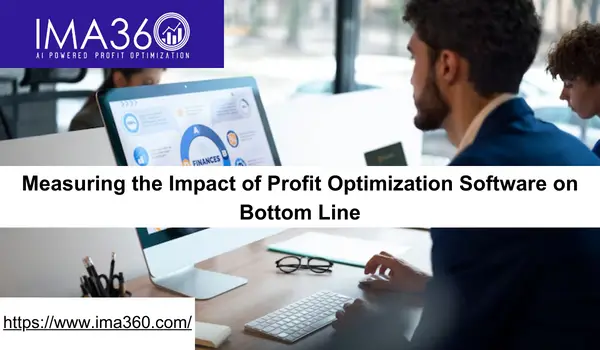Today, businesses strive to improve their earnings as steadfastly as possible by employing various methods of doing so. A powerful software has been designed and is used currently to solve optimization of profit problems. This software operates using advanced algorithms, data analytics, and machine learning to uncover the right directions for the business performance everywhere. Nonetheless, what method do companies utilize to assess the true influence of the profit optimization system on the profit line?The essence of which we discuss in this blog is how to measure the efficiency of these new approaches by using corresponding indicators.
Understanding Profit Optimization Software
Profit optimization software developed to scrutinize immense data and identify some hidden patterns and perceptions that could contribute to the enhanced profitability. It explores topics like pricing strategies, cost structures, consumer behavior, and market dynamics to generate real advice for implementation. The software is a tool which helps enterprises take up decision processes efficiently in areas of pricing, promotions, inventory management, and others.
The metrics of impact to be evaluate
Net Profit Margin:
Definition: Percentage of revenue remaining after all operating expenses, interest, taxes, and other costs have been subtracted.
Impact: The software's feature of increasing efficiency and decreasing avoidable cost leads to a bigger net profit margin.
Revenue Growth:
Definition: The growth in sales of a company within a specific time frame.
Impact: Proper pricing policy and more customer insights enable sales increase which makes a clear software role in sales improvement.
Return on Investment (ROI):
Definition: An indicator of investment performance, representing a benefit from the investment minus its cost.
Impact: The ROI of the profit optimization software can be determined by looking at the financial return generated from this investment.
Inventory Turnover Ratio:
Definition: The times inventory is sold and replenished within a certain time period.
Impact: Reduced holding costs and preventing situations like stockouts or overstocks by the way of optimized inventory management leads to higher inventory turnover ratio.
Case Study: Real-World Impact
Examine a retail firm that employed profit optimization software in order to take its pricing strategy and inventory management to the next level. Before the implementation, the company was bearing higher inventory costs and fluctuating profit margins. Post-implementation, the company reported:
A 15% rise in gross margin due to more efficient pricing strategies.
A 10% improvement in net profit margin through efficient and waste-free operations
Generating 20% more revenue with data-driven marketing and sales strategies.
A high return on investment, with the software's cost being recouped within six months through increased profits.
Enhanced Inventory turnover ratio, eliminating excess stock and related holding costs.
The Best Practice to Measure Impact
Establish Baselines: Before implementation, gather data to establish a reference point to measure subsequent progress.
Regular Monitoring: Constantly watch the selected metrics to signal the progress and reveal the trends.
Periodic Reviews: Conduct periodic reviews in order to check the performance of the software and make the required amendments.
Employee Training: See to it that the staff are capable of using the software and interpreting its insights correctly.
Conclusion
Profit optimization technology offers a dramatic chance for businesses to elevate their financial standing. Through the identification of the key metrics such as gross profit margin, net profit margin, revenue growth, ROI, and inventory turnover ratio, the company will evaluate the software's contribution to the bottom line. The case study example shows the practical benefits of the software, so it is a worthy investment for companies which aim to get more profitability and efficiency of their operation. Implementing and using profit optimization software is a wise strategic move that can significantly enhance the financial health of the company.





